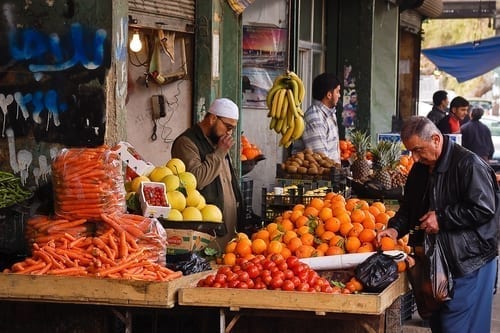At the end of the Avodah portion of the Yom Kippur Musaf, after the Kohen Gadol ventured into the Holy of Holies to offer his services to G-d, and the Jewish nation was forgiven and cleansed, comes a poem with the refrain of “Ashrei Ayin,” “Happy is the eye that saw all this, for the ear to hear of it distresses our souls.” Pious men weep over these passages, envious of their ancestors who lived during the times of the Temple, wishing that they too were able to witness what nowadays can only be seen in the mind’s eye. In truth, though, even those who were present for the Yom Kippur Avodah in the Beis Hamikdash hardly saw anything. They did not accompany the Kohen Gadol as he entered the Holy of Holies, and only got a glimpse of him upon exiting. Nonetheless, the poet says that at the moment they saw the High Priest exiting the chamber, they witnessed the Divine presence.
Anyone who visits the Kotel today, that ageless remnant of the Holy Temple, has a similar experience, beholding a presence through an absence, seeing in mute stones a manifestation of the Shechinah. Someone once expressed it this way: “There are hearts and there are hearts; there are human hearts and hearts of stone. There are stones and there are stones. There are stones that look like stones, and there are stones that are actually hearts…” The Brisker Rav, zt”l, viewing the Kotel through the prism of halachah, said that it is an exalted makom tefillah (place of prayer), which may in fact be its highest praise. There is another aspect as well. On the verse “And Avraham was old, well-stricken in age, and G-d had blessed Avraham in all things (bakol)” (Bereishis 24:1), the Ramban cites the Midrash that states that Avraham was blessed with the attribute of “kol,” completeness. This Midrash, he continues, is rooted in the mystical idea that there is something in this world that is a comprehensive whole, which contains within it every aspect of existence. This is the attribute of “Kneset Yisrael,” the all-inclusive, all-encompassing Jewish nation.
The profundity of this concept can be appreciated at the Kotel like at no other place on Earth. Whenever I have the merit to be at the Kotel, I always look for diversity. Why join the same kind of minyan (prayer group) that I can find back home? On a pleasant Friday night, I often prefer to pray with a minyan comprised primarily of students from one of the settlement yeshivot. The last time I was at the Kosel on a Friday night I joined a minyan of yeshivah students from the settlement of Beit El, a town located in the hills north of Jerusalem with a population of over 6,000 residents. Many of these boys had long curly peiyot (side curls) and wore knitted white yarmulkes that covered most of their heads. These boys, who would have passed for hasidim had they worn black clothing, weren’t merely praying but dancing with such fervor as they prayed that they seemed to be flying. I was reminded of the last words of Rabbi Chanina ben Teradyon before he was killed by the Romans, “I see the parchment burning, and the letters flying up in the air.” In this instance, however, the parchment too was joining in their animated dance. Even the ancient stones of the Kotel seemed to defy their age, becoming young and enthusiastic once again.
On the plaza was a group of American Christians who had been on the same flight as me out of Newark, New Jersey. They seemed deeply moved by the animated davening taking place all around them and were mouthing their own prayers silently. I was tempted to go over to them and point out these young settler boys praying, with their long blond peiyot swaying wildly in the Jerusalem breeze. I doubted they had ever witnessed someone praying like that.


